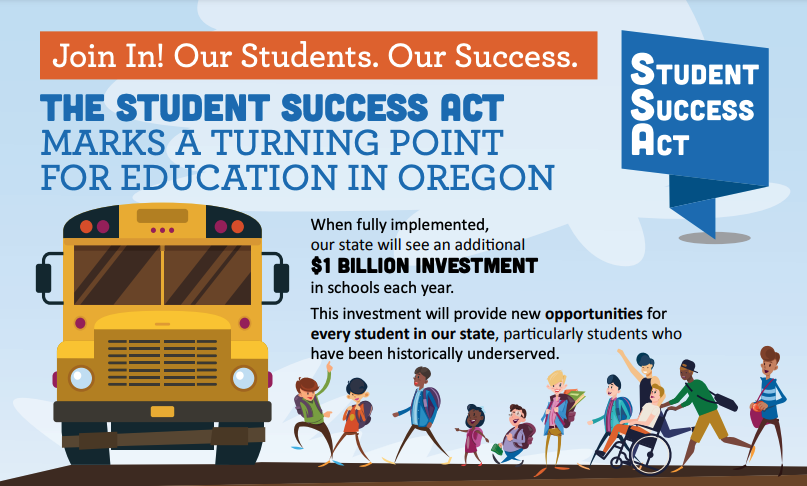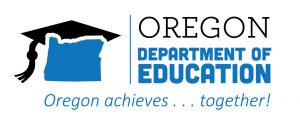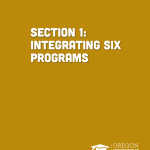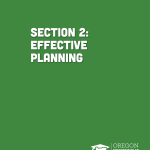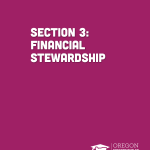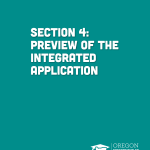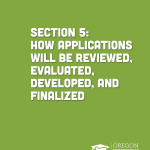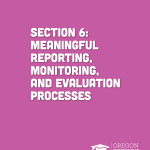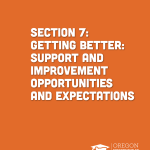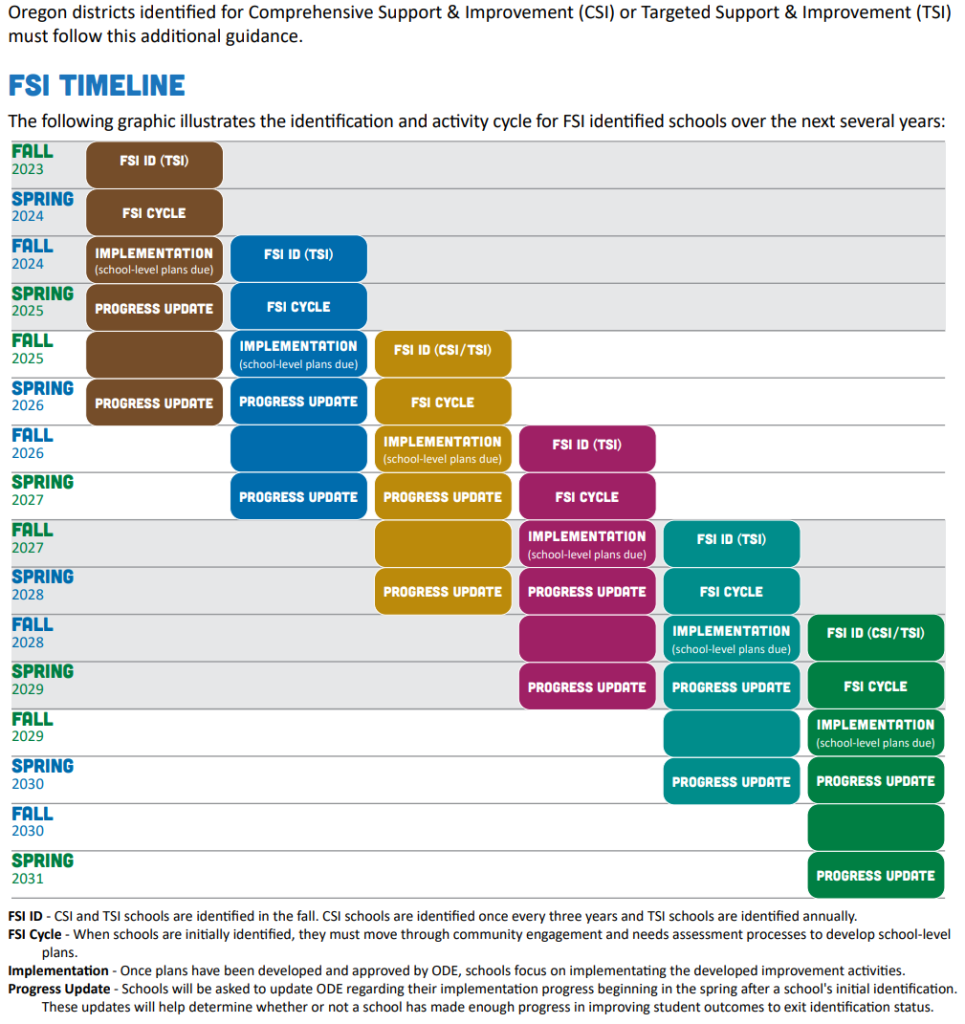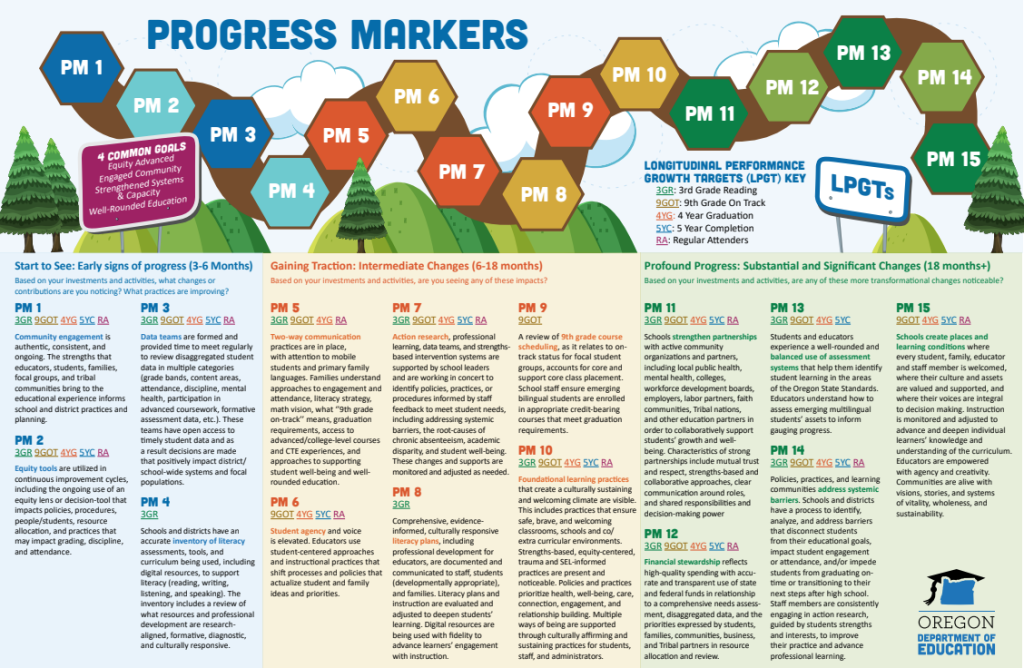School District Literacy Grant Resources
In 2023, the Oregon Legislature established early literacy as a top priority. In creating the Early Literacy Success Initiative, they identified four goals:
- Increase early literacy for children from birth to third grade;
- Reduce literacy academic disparities for student groups that have historically experienced academic disparities;
- Increase support to parents and guardians to enable them to be partners in the development of their children’s literacy skills and knowledge; and
- Increase access to early literacy learning through support that is research-aligned, culturally responsive, student-centered and family-centered.
These goals will be accomplished through four programs: the Early Literacy Success School District Grants, the Early Literacy Success Community Grants, Early Literacy Success Tribal Grants, and the Birth through Five Literacy Plan (administered through the Department of Early Learning and Care).
The Early Literacy Success Initiative secures $90 million in non-competitive, application-based grants for the biennium to support comprehensive early literacy plans (defined as pre-kindergarten through third grade) in order to increase early literacy statewide.
FAQs
Click for a full list of ODE’s FAQs (25-27).
Hiring — You may use funds to hire literacy coaches, specialists, and interventionists if they meet all of these criteria:
- Must have specific advanced training in “research-aligned literacy strategies” and “the science of reading and writing” that is
- included in a course in an educator preparation program
- or included as a course in a post-graduate degree program in teaching reading or literacy
- or provided by ODE or included on the ODE list of PD providers
- or provided by a school district or ESD
- Must have a literacy-focused licensure endorsement
- Primary role and responsibility must be direct support of students and/or educators
Purchasing Curriculum — Core curriculum must be purchased from the ODE-approved list. Supplemental material purchasing guidance is not yet available.
Requirements for Literacy Coaches, Specialists, Interventionists — Starting in 2025, do all literacy coaches, specialists, and interventionists funded by the grant have to have both:
- a literacy-focused endorsement
- in addition to the advanced training in “research-aligned literacy strategies” and “the science of reading and writing.”
ODE Answer: Yes. The training does not take place of the endorsement but is in addition to the endorsement.
What qualifies as “advanced training”? Is there a list of these trainings that would qualify as meeting this requirement or as long as they have taken a Science of Reading workshop offered by SOESD that would meet the requirement?
ODE Answer: Districts may meet the requirement for advanced training or certification in “research-aligned literacy strategies” and “the science of reading and writing,” through any of the following methods:
- Completing course(s) in an educator preparation program,
- Completing course(s) in a post-graduate degree program in teaching reading or literacy; or
- School districts or ESDs provide the advanced training.
Completing a Science of Reading workshop offered by SOESD would meet the requirement under the third bullet point. If using internal training, the individual school or ESD may determine the specific parameters around the amount of training required.
What endorsements meet the grant requirements for being a literacy coach, literacy specialist, or literacy/reading interventionist?
ODE Answer: Beginning in the 25-27 biennium, literacy coaches, specialists or interventionists* must (among other requirements) hold one of the following endorsements in order to to be funded through Early Literacy dollars:
- Elementary Multiple Subject
- Reading Intervention
- Special Education: Generalist
- English to Speakers of Other Languages (ESOL)
*Interventionists must hold a Reading Intervention Endorsement
Other questions? ODE can be reached at k12.literacy@ode.oregon.gov.

